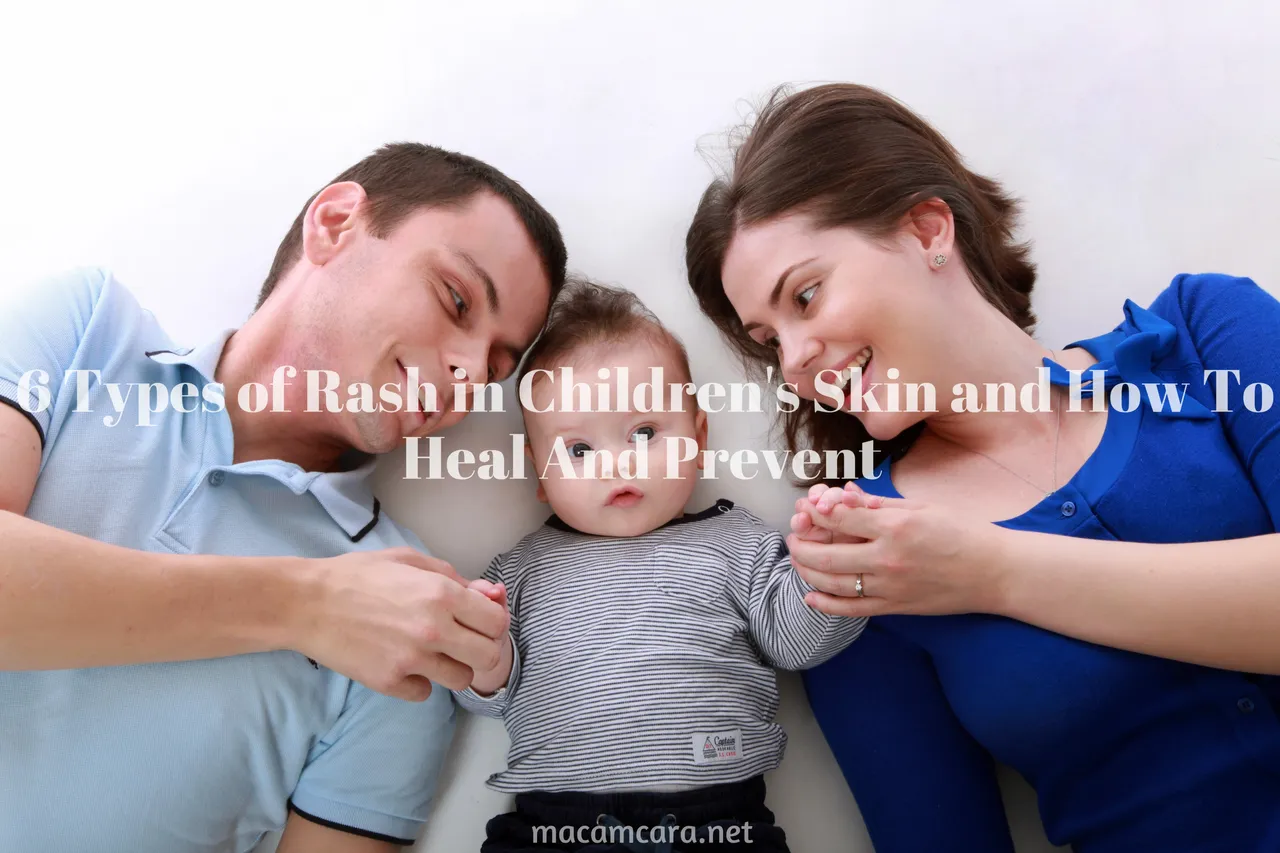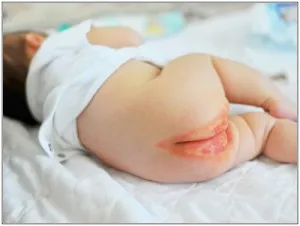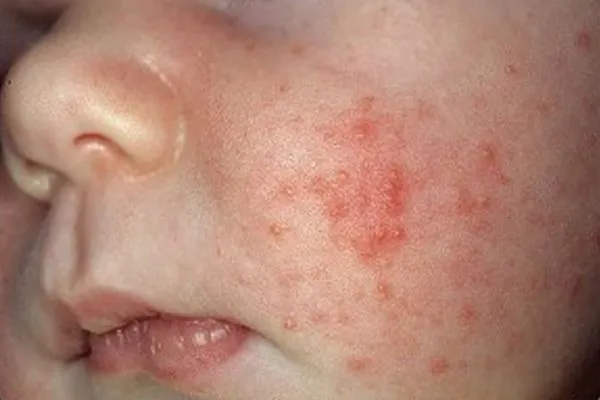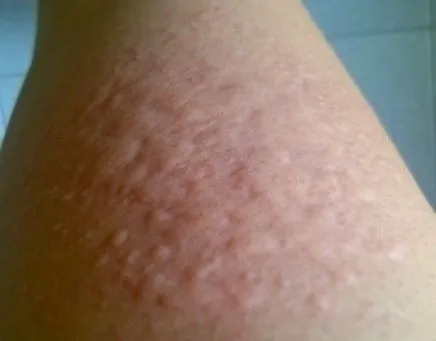
In infants who are obese, sometimes we find red or rash on the child's skin on the neck and armpits.
These spots are skin inflammation due to moisture.
Instead, every baby finished bathing, the neck and armpits dried with a towel until completely dry.
To better understand the contents of this article, Mother can read articles about avoiding allergies in children first.
Inflammation in the skin of the neck folds can also be caused by an acidic inflammatory vomit.
Red spots or inflammation of the baby's skin is caused by several things,
Including the following :
- Diaper Rash

The first child's skin rash is a diaper rash or diaper rush common in infants,
Namely the skin of the buttocks and red-red crotch.
Diaper rash is caused by chemicals used to wash the staple, and even the softener.
Diaper rash can also occur because of late diapering and use diapers / pampers that are very often and long,
So the ammonia in baby's urine irritates the skin.
Frequent diarrhea can also cause rash in the anal area.
If the baby experiences this, all we have to do is diligently lie the baby in a clean and warm room,
With the buttock and crotch position open for a while.
Before wearing a diaper or pants, make sure the baby's skin is dry and do not give powder because it will only add to the bacteria there.
If the rash is large and wet, it is necessary to administer a protective ointment containing zinc, vitamin A, and vitamin D as prescribed by the physician.
Use a safe soap / detergent, bleach, and fragrance for baby's skin.
Diaper rash can be prevented by avoiding the use of plastic diapers.
Because it can cause yeast infection of candida albicans,
That is the appearance of small patches of redness on the genitals to the groin.
Wear a diaper made of cotton, and immediately change the diaper if wet.
Do not use diapers (liquid absorbent diapers) whenever possible,
But if not possible, may be used origin not too long.
- Sweatbill

Prickly heat, we often encounter prickly heat or sweat buntet,
That is blockage of miliara sweat gland channel due to bacterial skin activity.
Usually, there are red spots and itchy.
Prickly heat often occurs in hot airspace.
Avoid dressed in thick clothes and sweatshirts that can absorb sweat.
Frequently replace the baby shirt if it is wet exposed to sweat.
- Milk Rash

Milk rash / milk eczema we often encounter in infants, Javanese people term "buras".
The signs are around the baby's cheeks there is a white rash like panu and itchy.
Avoid bathing the baby with water that is too hot,
Because hot water can cause dry skin and itch more.
Do not scratch, because it will cause blisters and wounds that facilitate fungal and bacterial infections.
If the rash extends to the neck and back, immediately take your baby to the doctor.
Especially if accompanied by fever, wet skin, purulent, and fussy children should not try to treat yourself.
Please also read the article on respiratory tract diseases in children here.
And also to be more clear on this article about asthma.
A milk rash is also called atopic dermatitis. The cause is allergic.
This is often experienced by infants if parents have a history of allergies.
Take a look at when a rash occurs and remember what food allergens are eating because they can be infected through breast milk.
Other causes can be due to pollution, heat, and mites.
Avoid allergens. Keep in mind, this rash is not due to exposure to breast milk.
- Seborrhoeic Eczema

Skin rash The fourth child is seborrhoeic eczema that more often infects the scalp area.
This rash does not itch and does not interfere with the baby.
This is just the influence of maternal androgen hormones.
As the baby gets older, this rash becomes dandruff.
The hemorrhoid eczema may be removed.
You do this by using a fine-toothed comb.
Another way by applying coconut oil until slowly this scale will come off.
Do not be forcibly removed so that baby's scalp is not injured.
Usually, within 3-7 days this eclectic will be all lifted up.
However, it is not impossible that this eczema can spread throughout the body.
If this happens, contact your doctor immediately.
- Contact Dermatitis
Contact dermatitis is a rash often suffered by children aged 2-12 years. Contact dermatitis is red and itchy rash. The rash is sometimes scaly or cracked, sometimes accompanied by blisters.
This rash is caused by skin contact with several external causes, such as some types of grasses, some types of flowers, caterpillars, cosmetics, talc, soap, chemicals in fabrics, and others.
The first aid we can do is to provide steroid lotions or ointment.
Avoid the sun because it will make the rash becomes more severe.
Prevent baby from scratching.
If the rash is getting wider and worse, check with your doctor immediately.
This rash can be prevented by avoiding substances that can cause contact dermatitis.
Recognize and avoid some types of harmful plants, and provide an ointment at home.
- Biduran

Skin rash in the last child is Biduran / urticaria is an allergic reaction to the skin of rash and itchy rash.
The size varies.
Biduran can occur in all the skin of the body both children and adults.
Bumps are most common in the lips, eyelids, and hands.
Biduran often occurs due to food allergies, drinks, cold, and contact with something that causes allergies.
First aid we can do is to compress, bathe, or give kalamin lotion.
If the child is allergic to cold, warm the child.
If the child feels very itchy, give an antihistamine.
If biduran extends to the airways that cause cough, difficulty swallowing, and shortness of breath, consult a doctor immediately.
Prevention is to avoid all causes of allergies.
Either from food, drink or cold.